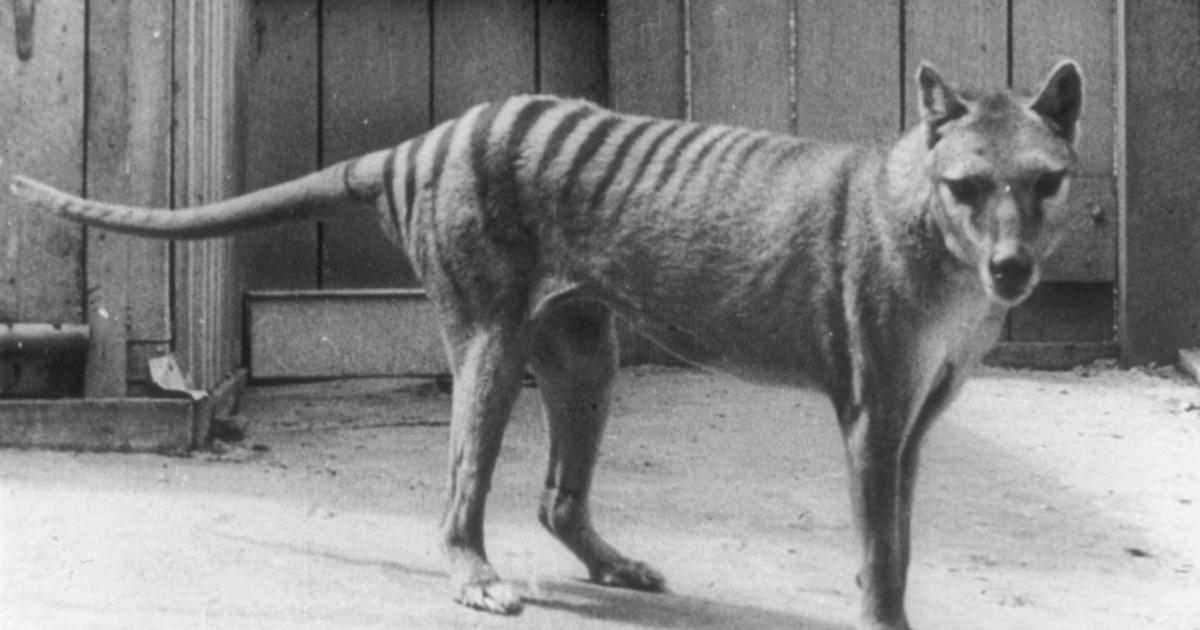
Scientists say they’ve made a breakthrough in efforts to bring back the extinct Tasmanian tiger

It’s been decades since Australia’s thylacine, known as the Tasmanian tiger, was declared extinct and scientists say they’ve made a breakthrough as they research ways to bring back the carnivore.
Colossal Biosciences in a Thursday press release said its reconstructed thylacine genome is about 99.9% complete, with 45 gaps that they’ll work to close through additional sequencing in the coming months. The company also isolated long RNA molecules from a 110-year-old preserved head, which was skinned and kept in ethanol.
“The thylacine samples used for our new reference genome are among the best preserved ancient specimens my team has worked with,” said Beth Shapiro, Colossal’s chief science officer and the director of the UCSC Paleogenomics Lab, where the samples were processed. “It’s rare to have a sample that allows you to push the envelope in ancient DNA methods to such an extent.”
60 Minutes earlier this year, said researchers were working with the closest living relative of the Tasmanian tiger — a small marsupial called the fat-tailed dunnart — as a way to bring the animal back.
“But that little dunnart is a ferocious carnivore, even though it’s very, very small,” Pask said. “And it’s a very good surrogate for us to be able to do all of this editing in.”
Scientists have been comparing the DNA of the dunnart and the thylacine, Pask told 60 Minutes. From there, it’s a matter of going in and editing the DNA to turn a fat-tailed dunnart cell into a thylacine cell.
Colossal Biosciences on Thursday said it had edited more than 300 unique genetic changes into a dunnart cell, making it “the most edited animal cell to date.”
“We are really pushing forward the frontier of de-extinction technologies,” Pask said, “from innovative ways of finding the regions of the genome driving evolution to novel methods to determine gene function. We are in the best place ever to rebuild this species using the most thorough genome resources and the best informed experiments to determine function.”
Efforts aiding the revival of the Tasmanian tiger are not confined to Australia. Last year, scientists recovered and sequenced RNA from a 130-year-old Tasmanian tiger specimen preserved at room temperature in Sweden’s Museum of Natural History.
How the Tasmanian tiger died off
Thylacines roamed Tasmania for thousands of years. Despite the Tasmanian tiger moniker, the carnivores were marsupials, like kangaroos, koalas and Tasmanian devils.
The local government in the late 1800s paid out bounties to hunters presenting carcasses of Tasmanian tigers because the animals had been eating farmers’ sheep, 60 Minutes previously reported. By the mid-1930s, the Tasmanian tiger population had dwindled to a single thylacine at the Beaumaris Zoo in Hobart, Tasmania’s capital. It died there in 1936.
Australia has similarly allowed the culling of Kangaroos, approving the deaths of thousands of kangaroos over the years. Officials have said the kangaroo population was eating through grassy habitats of endangered species. Officials have also warned in the past that there isn’t enough food available to sustain large kangaroo populations.
Aliza Chasan
Source: cbsnews.com